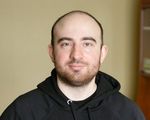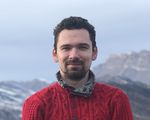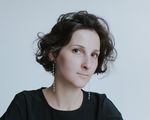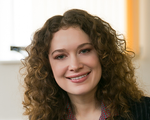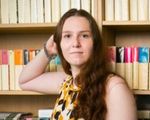About Success Builder
How do you find your place in life? How do you find something to do that both comes naturally to you and makes you happy? The answer is that you have to apply the knowledge you’ve gained from university and from life itself correctly. The Success Builder Project features HSE University graduates who have discovered themselves through an interesting business or an unexpected profession. The protagonists share their experiences and lessons learnt and talk about how they’ve made the most of the opportunities they were given.
Science had already moved into the sphere of consumption in the 20th century, and we now treat technological innovation as if it’s simply a new item on a restaurant menu or the premier of the latest blockbuster film. Science works for everyone personally, and this ‘scientific marketing’ is the merit of new-era scientists – the ‘Steve Jobses’ who are capable of not only inventing, but also selling their inventions. Alexey Rolich, who is a graduate of HSE MIEM, the head of the 3D Visualization Laboratory, and the creator of the Public Charger project, which has received an UMNIK grant, tells Success Builder how to make money in science.
How did your scientific career begin?
I got involved with science rather late – in my fifth year at MIEM. At the time, I was working on something that ended up turning into a fully-fledged scientific project. But working quietly and just for yourself isn’t really my thing, and I went to the Open Innovations forum to present one of my project outlines. I had to present in front of serious people like Chubais, which boosted my confidence and gave me the desire to be convincing. A lot of engineers have problems talking to people; they’re introverts, spherical horses in a vacuum as we say, who do things for themselves to grow and cultivate their skills, but are unable to talk about these things, let alone sell their ideas.
There’s a stereotype that engineers are intelligent sociophobes who like mountains. Is that true?
It depends on the profession. The thing is, it’s the engineer’s job to work not only with their head, but also with their hands. With this applied experience, it’s hard for engineers to pass the philosophy section of post-graduate entrance exams. Philosophy runs counter to the engineer’s practical perception of reality. This is why engineers might not have a lot of experience with emotional or social activities. This holds true for a lot of scientists too. But I think that we need to break away from this stereotype. The engineer needs to be able to do more than just solder metal or write programmes. The engineer must above all be erudite. They need to have some knowledge of philosophy, history, economics, and sociology in order to understand how ethical their developments are. And this is arguably one of the most important things in modern-day science.
So if someone invents something, how can you envision the project in the future and paint a picture of how it might be sold?
It’s necessary to read about economics, especially about business modelling. My understanding of the applied side of things comes from observation – from seeing colleagues’ projects and trying to apply them to my own situation. I also talked to older people with more experience. At the same time, I tried to learn more about economics, management, marketing, etc., and I fortunately found support at HSE. Master’s students from the Economics Faculty wrote me and suggested using my financial metric for their thesis work. It was great. The more people – sociologists, economists, entrepreneurs – who contribute their ideas to a project, the less likely you are to fail in presentation.
Was the Public Charger project initially envisioned as a way of receiving a grant?
It was a coincidence. I started going everywhere, making suggestions, and I started creating the Public Charger ‘brand.’ Everyone would smile when I’d start telling the story from a technical standpoint before finishing with everyday terminology like an urban activist. It turned out that this is a good way of getting the public interested. Even if your project or presentation format brings about a mixed reaction, any type of emotion and its commercialization is considered 21st century marketing.
₽20 000
is the monthly stipend students receive under the Russian Presidential Scholarship. The scholarship is paid to students under the age of 35 for a period of three years.
How does one train for academic competitions?
When you’re developing something, you really want to implement it, and these kinds of events are a way of doing that. My first successful competition was for the UMNIK grant from the Foundation for Assistance to Small Innovative Enterprises. The grant was for the Public Charger project [the project allows you to charge your iPhone or laptop in locations such as subway stations and other means of public transport]. But you have to prove that you want to do something important, and this requires you to prepare for a competition using a special methodology. The whole laboratory helped one another prepare; we would look at the projects we had, make selections, deal with financial issues in implementation, and figure out how to sell the product. By the way, I wasn’t successful my first time, but this didn’t get me down. It just prepared me for the next competition. It was really interesting to look at others’ projects – projects created by scientists ranging from doctors and chemists to IT experts – and to see expert evaluations of the projects. To a certain extent, you yourself become an expert and you see the problem areas in the cases, which is why it’s necessary to look for opportunities like this, be it a competition or an exhibition. This is a way of interacting with the sphere of innovations, and it brings together the resulting opinions and ideas.
Can you talk about the non-project or competition side of things? What else makes a young scientist’s job interesting?
When I was just starting out at MIEM, a representative of MIEM Profkom said to me: ‘Rolich, you’re everywhere.’ And I really am everywhere. If I weren’t everywhere, I’d be nowhere. If you want to achieve something, you have to be everywhere at once. Working, not getting enough sleep, forgetting about yourself, sometimes refusing to relax… This is how I’m simultaneously involved in different projects, along with lab work, management, marketing, academics, and my work with a group of students. I got a lot of what I teach students in the 3D laboratory from my own experience. We have interdisciplinary projects that can kill two birds with one stone, so to speak: you get credit, earn an additional stipend, put yourself out there as an academic, build up your portfolio, or create your own business.
My academic advisor Leonid Voskov and his first students Mikhail Komarov and Sergey Efremov founded the laboratory that we all came from – the WiSeNet Lab Laboratory for Innovative Projects. We created projects in the field of virtual reality, smart energy, wireless sensor networks, and the Internet of Things (IoT), which is a network of physical objects, dubbed ‘things,’ that are embedded with electronics, sensors, networks, etc., thereby allowing the physical objects to gather and exchange data.










